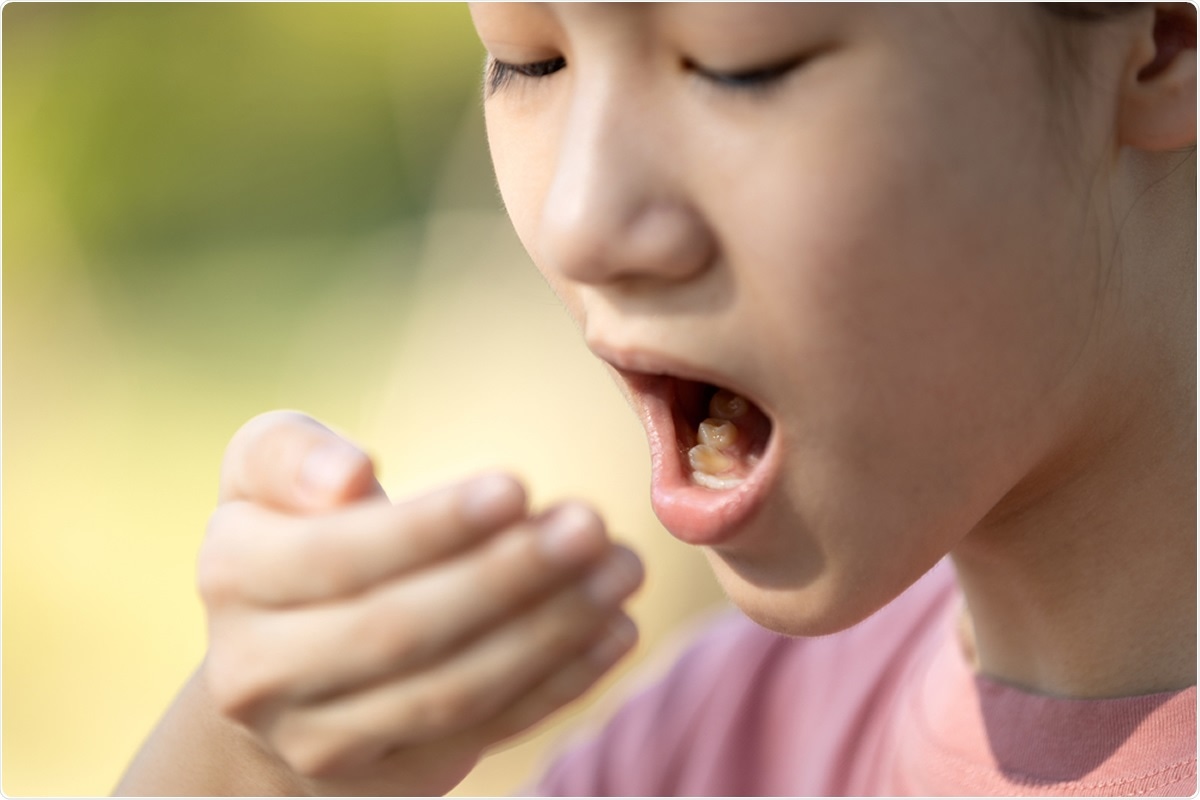Aug 10 2020
Download PDF Copy
As the coronavirus pandemic continues to ravage worldwide, new data shows a multitude of symptoms that were not reported previously. It is well-known that the primary symptoms tied to the coronavirus disease are fever, cough, and difficulty of breathing. As time passed by, other symptoms emerged, including the loss of smell and taste, fatigue, body pains, headache, hair loss, and even a rash in the mouth.
Now, a team of researchers revealed another atypical symptom reported by patients infected with the severe acute respiratory syndrome coronavirus 2 (SARS-CoV-2), the virus that causes the coronavirus disease (COVID-19) – persistent hiccups.

Study: Persistent hiccups as an atypical presenting complaint of COVID-19. Image Credit: CGN089 / Shutterstock
Download PDF Copy
As the coronavirus pandemic continues to ravage worldwide, new data shows a multitude of symptoms that were not reported previously. It is well-known that the primary symptoms tied to the coronavirus disease are fever, cough, and difficulty of breathing. As time passed by, other symptoms emerged, including the loss of smell and taste, fatigue, body pains, headache, hair loss, and even a rash in the mouth.
Now, a team of researchers revealed another atypical symptom reported by patients infected with the severe acute respiratory syndrome coronavirus 2 (SARS-CoV-2), the virus that causes the coronavirus disease (COVID-19) – persistent hiccups.

Study: Persistent hiccups as an atypical presenting complaint of COVID-19. Image Credit: CGN089 / Shutterstock
The case report
Published in the journal The American Journal of Emergency Medicine, a case report by researchers at Cook County Health described an incident wherein a 62-year-old patient who went to the emergency department had reported persistent hiccups for days and an unintentional weight loss over four months.
The man experienced hiccups for four days before being admitted to the hospital due to fever. Further tests revealed the patient had problems with his lung capacity, and he was later isolated and tested COVID-19 infection.
“An abnormal chest X-ray led to a CT scan of the chest with IV contrast, which demonstrated regional, peripheral ground-glass opacities of the upper lobes with small focal ground-glass opacities scattered throughout the lungs,” the authors wrote in the paper.
“He was tested for COVID-19 per admission protocol, started on hydroxychloroquine, his hiccups improved, and he was discharged to home after three days. An emergency medicine physician should keep COVID-19 on the differential and be vigilant of exposure in atypical presentations,” they added.
This is the first case report of persistent hiccups as the presenting complaint in a COVID-19 positive patient, the researchers claimed.
COVID-19 clinical characteristics
The clinical characteristics of COVID-19 are rapidly evolving as data continues to be collected across the globe. As more cases are reported, a multitude of signs and symptoms, even atypical ones, are being reported.
The case report of the man who had hiccups highlights two crucial issues, the researchers noted. First, it underscores the importance of having a detailed evaluation of those presenting with hiccups. Aside from this, it is also important for doctors to take a thorough history, conduct a physical exam, and to obtain general laboratory work and chest X-ray imaging.
Second, doctors and clinicians should keep COVID-19 infection on their differential as more cases are being discovered through atypical symptoms, which could be unexpected and bizarre. Further, doctors and the healthcare team should always maintain personal protective equipment to avoid exposure from patients who do not present with the typical symptoms of the coronavirus infection.
COVID-19 signs and symptoms
The typical signs and symptoms of coronavirus disease include coughing, fever, and shortness of breath, according to the U.S. Centers for Disease Control and Prevention (CDC). As the pandemic evolved throughout the eight months it has rippled across the globe, more signs and symptoms were reported.
These include fatigue, body pain, headache, loss of smell, loss of taste, runny nose or nasal congestion, nausea and vomiting, diarrhea, hair loss, and sore throat. Recently, a new addition has been added, which is the formation of rashes inside the mouth.
In patients with COVID-19, they are to seek medical help if they develop difficulty breathing, persistent pressure or pain in the chest, new confusion, bluish lips or face, and the inability to stay awake. Patients with severe coronavirus illness may develop many complications, including acute respiratory distress syndrome (ARDS), which is life-threatening.
Global situation
The coronavirus pandemic is actively spreading, with the United States reporting the highest number of cases, reaching more than 5 million cases and more than 163,000 deaths. Brazil and India follow with a staggering 3 million and 2 million cases, respectively.
Russia, South Africa, and Mexico report high transmission rates, with cases reaching 890,000, 563,000, and 480,000, respectively. South America has not become the new epicenter of the pandemic, with Brazil, Peru, Colombia, and Chile seeing a surge in infections.
Sources:
U.S. Centers for Disease Control and Prevention (CDC). (2020). https://www.cdc.gov/coronavirus/2019-ncov/symptoms-testing/symptoms.html
COVID-19 Dashboard by the Center for Systems Science and Engineering (CSSE) at Johns Hopkins University (JHU) - https://gisanddata.maps.arcgis.com/apps/opsdashboard/index.html#/bda7594740fd40299423467b48e9ecf6
Journal reference:
Prince, G., and Sergel, M. (2020). Persistent hiccups as an atypical presenting complaint of COVID-19. The American Journal of Emergency Medicine. https://www.ajemjournal.com/article/S0735-6757(20)30274-6/fulltext

Written by
Angela Betsaida B. Laguipo
Angela is a nurse by profession and a writer by heart. She graduated with honors (Cum Laude) for her Bachelor of Nursing degree at the University of Baguio, Philippines. She is currently completing her Master's Degree where she specialized in Maternal and Child Nursing and worked as a clinical instructor and educator in the School of Nursing at the University of Baguio.
No comments:
Post a Comment